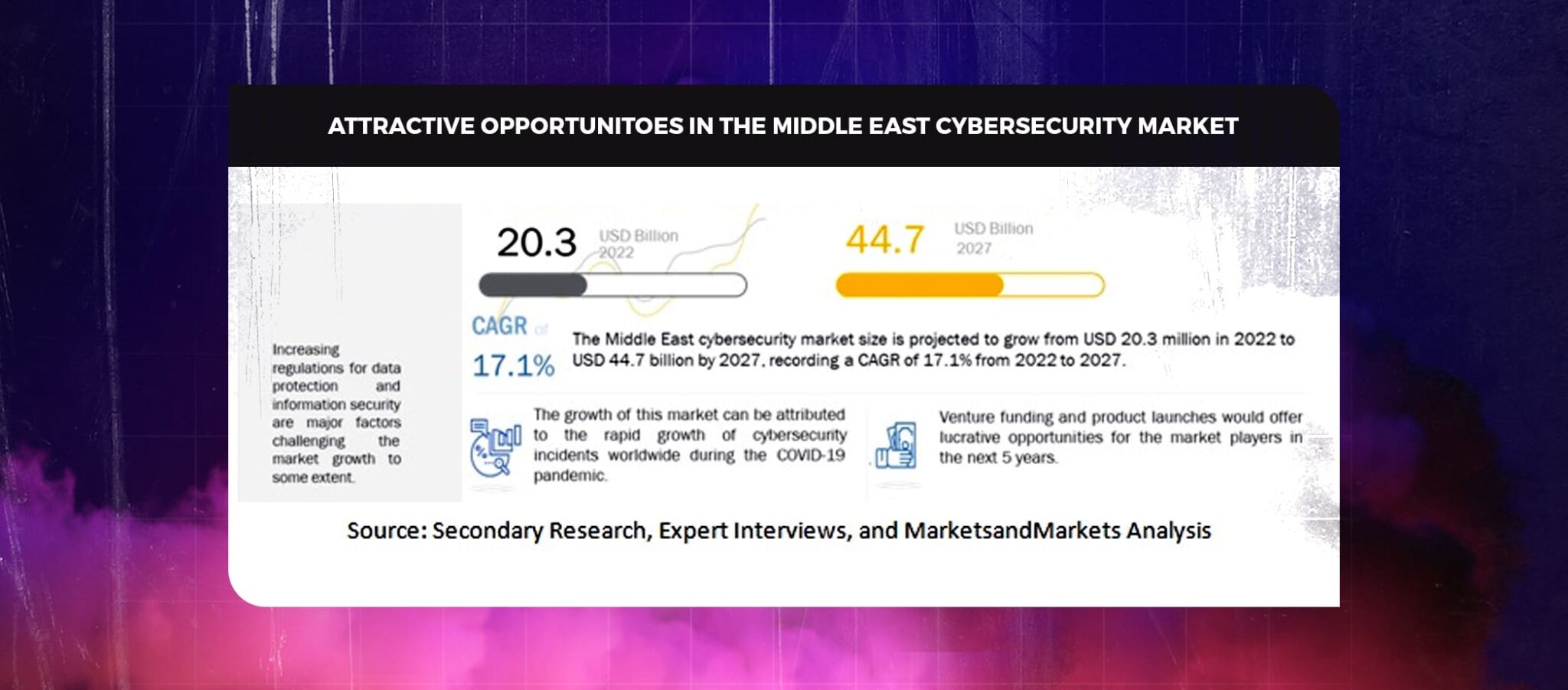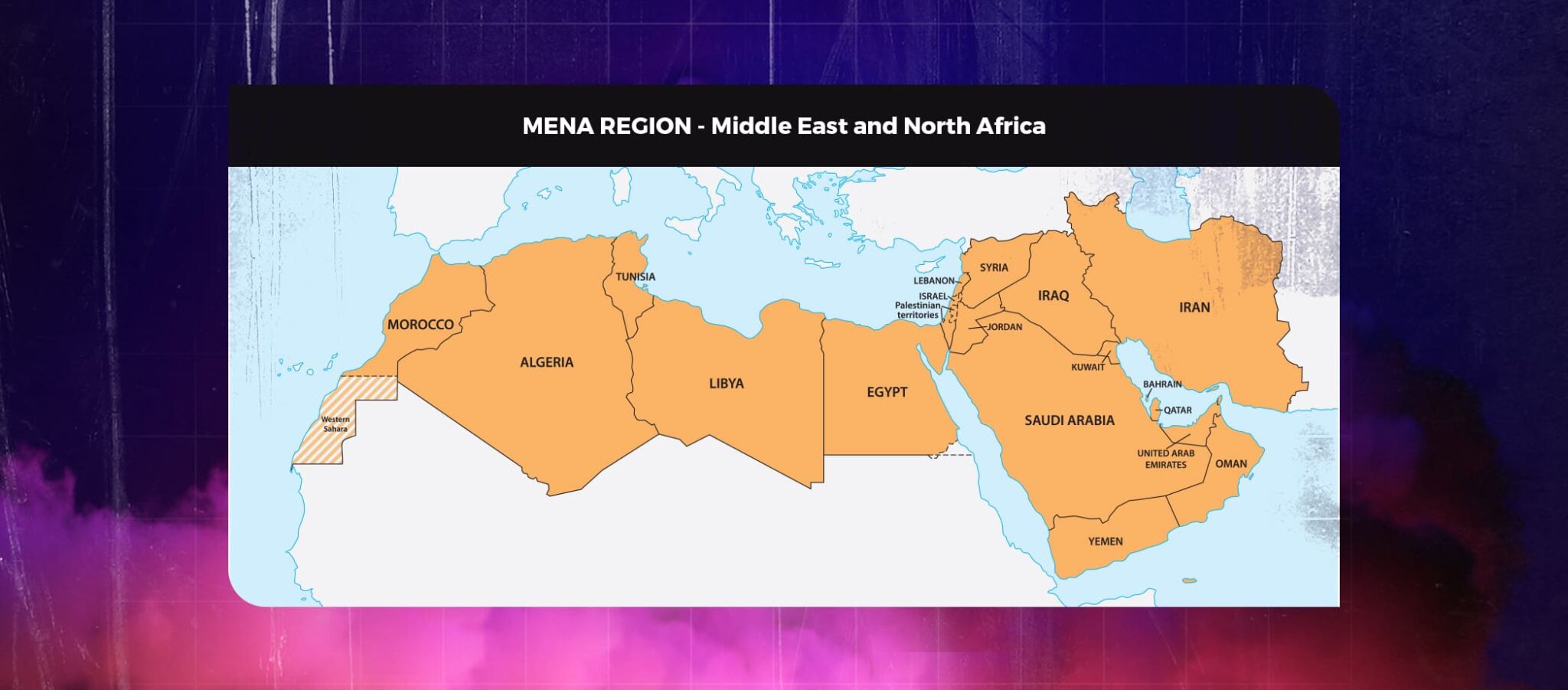

MENA cybersecurity industry faces significant obstacles
According to projections, the size of the Middle East Cyber Security Market will increase from USD 20.3 billion in 2022 to USD 44.7 billion by 2027, expanding at a Compound Annual Growth Rate (CAGR) of 17.1% throughout the forecast period.
The growing sophistication of cyberattacks across heavy sectors to result in financial and reputational losses, strict government restrictions, and cyberattacks due to expansion of the digitalization are anticipated by the major market drivers.
The necessity to take the appropriate precautions in advance for ensuring the entire security posture and technological advancement in cloud and IoT has bolstered potential use cases across sectors.

Cyber attack is a global phenomenon that continues rising in tandem with the ICT industry’s rapid expansion; they are now at such a high level that both governments and individuals must work together to combat them. Cybercrime has evolved into well-organized networks with advanced attack techniques, and cyberattacks have grown to represent the kinds of hazards that a true war may bring; as MENA countries rapidly digitize their economies and their reliance on information technology grows.

The MENA region has recently grown more and more popular as a target for cyber attackers. Along with other crucial businesses, hackers concentrate on high-value government sectors (such as oil and gas). MENA regions are investing more money in the ICTs sector, social infrastructure, economic sector, and schools and hospitals, which are now entirely Internet-based. ICTs have currently taken on a crucial role in both domestic and international security structures in the MENA Region, underscoring the urgent need for significant advancements in cybersecurity there.
Also Read: ZERO TRUST SECURITY : A New Perspective on Cybersecurity
Challenges of Cyber Security
Growth of Cyber Crime
According to a survey by Cybersecurity Ventures, the cost of cybercrime globally is expected to increase by 15% annually between 2021 and 2025 and could total $10.5 trillion annually. The growth can be linked to a sharp increase in the activity of government-backed organizations and cybercriminal gangs. The attack surface is growing concurrently as a result of the digital transformation processes sparked by the advancement of the digital environment.
Lack of skilled Cyber Security Experts
The greatest difficulty faced by Middle Eastern firms and others is the shortage of people with the necessary cybersecurity capabilities, which is predicted to hinder the organizations’ capacity to satisfy constantly changing IT security requirements.
According to a CISCO report, in the Middle East, 94% of businesses acknowledged having experienced a cyber risk in the previous year. One of the biggest challenges to maintaining cybersecurity is the absence of security personnel, which is reported in the same report to affect 25% of firms in the Mena region. 34% of Middle Eastern breaches affected more than 50% of a company’s systems, while 58% of Middle Eastern businesses had to handle an outage lasting more than five hours in the previous year as a result of a breach. These figures show that businesses in the Mena region are hiring security experts that are ill-equipped to recognize and analyze these cutting-edge risks when confronted with a cyberattack.
The growth of the Dark Web
The massive increase in criminal behavior on the dark web in recent years, especially with the outbreak of the pandemic, is a significant issue and highlights how crucial it is to conduct threat intelligence operations in these hidden areas of the Internet.
New Cyber Attack Tactics
Trends like the emergence of new types of social engineering organizations must stay up with new and emerging attack scenarios and share this knowledge with their personnel.
One type of phishing that has witnessed rapid growth recently is so-called callback phishing, a technique that combines classic email-based phishing with voice-based phishing and is used to hack into businesses’ systems and spread malware, such as ransomware, on their networks.
Security in the Crypto Systems
Consumers, companies, and governments are all discovering new applications for Bitcoin and other cryptocurrencies and so are Cyber Criminals. Cyberattacks and cryptocurrency scams targeting different participants in the crypto ecosystem have exposed the industry’s susceptibility to hacks. It is clear why security-related issues in the bitcoin industry frequently make the news.
Also Read: Top 10 Considerations in Cybersecurity Risk Management
Final Words
MENA is an acronym that refers to both the Middle East and North Africa. The fast development of technology and network infrastructure has increased cyber security risks, which now pose a danger to all industries in MENA countries. Internet usage has grown significantly in the MENA region over the past ten years, but there has been little knowledge of cyber security risks. As a result, all MENA organizations have seen a high rate of cyberattacks, with significant economic and political consequences. To handle all the issues posed by cyber risk, it is essential to upgrade the network infrastructure and establish regulatory frameworks to control the use of cyberattacks in the area.
Shield your company from data breaches with PeoplActive – Cybersecurity consulting service. We build full security plans and provide ongoing guidance to eliminate vulnerabilities and keep your company protected.
Kartik Donga
Founder & Strategic Defense Architect, PeoplActive
Kartik Donga
Founder & Strategic Defense Architect, PeoplActive














